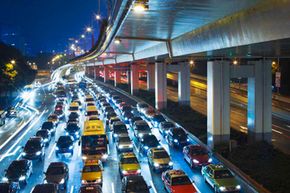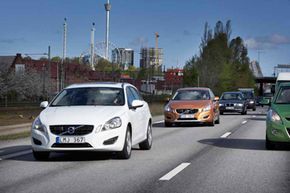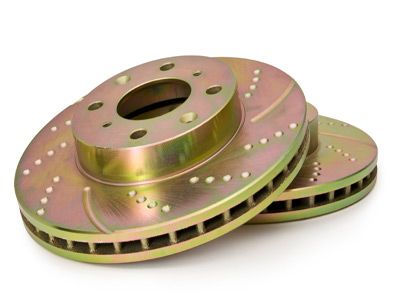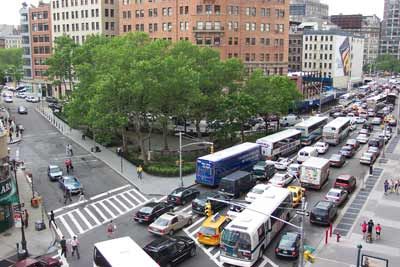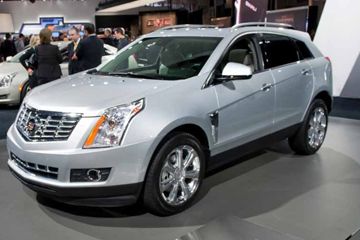The boredom and monotony of driving in heavy traffic is about to get ... well, even more boring and monotonous. However, Volvo is betting that a lot of drivers will be relieved to have a reprieve from the stress of constant acceleration and braking, and may even find some other ways to make use of the time.
But can a car really help with traffic jams? It would be awesome, but alas, we aren't quite there yet. What this system does is help drivers cope with the frustrations and distractions of being stuck in a traffic jam. It's like cruise control, except it's designed specifically to work in heavy traffic instead of on an open road. It's limited to use at slow speeds -- in fact, it's intended for travel at 31 miles per hour (49.9 kilometers per hour) or less.
Like a lot of automotive innovations, this one came out of something else. As we've mentioned, it's a natural next-step from advanced cruise control technology. It's a follow-up of sorts to Volvo's Adaptive Cruise Control system, which uses a combination of a cameras and radar to maintain a safe, set distance behind the car in front (a direct but distinct evolution of the decades-old standard cruise control, which simply maintains a steady speed and relies on the driver's judgment to avoid obstacles), and Lane Keeping Aid, which uses a network of cameras and sensors to keep the car centered within its lane. Adaptive Cruise Control and Lane Keeping Aid are both fairly young, 2012 model year debuts, and it's clear Volvo is looking for ways to squeeze the most mileage out of the technology. In fact, sources indicate that Volvo probably had a more comprehensive suite of features in mind all along. The goal, company execs have said, is to make driving more relaxed [source: Volvo].
So, if you and your new Volvo find yourself in such a jam, you'll be ready. Your car will monitor the vehicle in front of you, and pace it to automatically maintain a steady following distance. It'll also steer to stay within the lane. If the car in front swerves to avoid an obstacle, your car can mimic the same swerve path by following the tire treads. Altogether, the traffic jam assistance system commandeers the engine, steering and brakes. So by pressing the button, the driver entrusts the car to make the most important judgment calls of heavy-traffic driving: steering, deciding when to accelerate, and decelerate and determining how much of a distance cushion to maintain around other vehicles and obstacles.
Similar systems are in development by Audi, VW, Cadillac, Mercedes and Ford, and all are projected to debut on selected models within the next two years. So far, it seems like most will operate in a comparable way, as they're also designed to allow completely hands-free operation in these low-speed scenarios. Owners of Mercedes equipped with traffic jam assistance systems have fewer options to pass the time, though -- these drivers have to maintain contact with the steering wheel for the system to work. If a driver pulls his or her hands off the wheel, the system won't engage. The Ford version of the system, which is similar to Volvo's, has a different plan in place. It uses audio warnings to alert the driver to take back control if the car determines there's too much nearby activity, such as frequent changes in adjacent lanes, lots of obstacles, or erratic and therefore unpredictable speeds of travel.
Traffic jam assistance represents a significant investment in development and research. Prototypes were tested with consumers for more than a year and evolved to meet customer demand. The traffic jam assistance system seems to be framed like a safety device that has potential to reduce fender-bender type crashes in heavy driving -- Volvo, after all, is known for coming up with the latest and greatest automotive safety solutions. Volvo freely admits, though, that development of the traffic jam assistance system was motivated by customer demand -- in other words, it's as much of a luxury feature as it is a safety one. It just happens to be comprised of safety-based technology. But there's more -- the name of the system, combined with its capabilities, seems to imply that it could perhaps reduce traffic jams by attacking the problem, rather than the symptoms. And if that's at all possible, Volvo is probably right on top of it.
